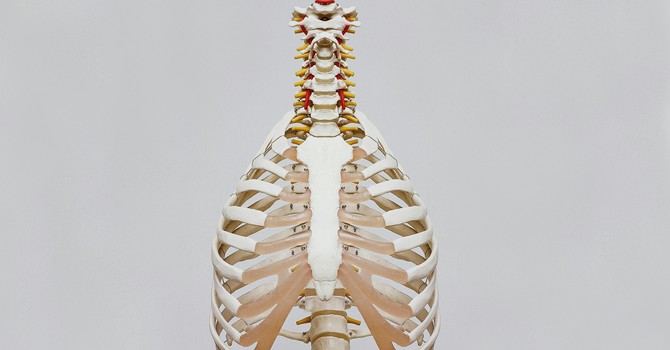I've always been quite frustrated with the idea of "engaging your core". Yes, our core muscles need to be functioning, but what are you actually doing with your muscles when you "engage your core"? Not so much of an issue if you have no pain and no dysfunction. But when we are dealing with rehabilitation and recovery, we need more specificity than "engage your core".
I was first introduced to the idea of palpating the abdominal muscles as a new and inexperienced Kinesiologist. Engaging your core was so important to my employer that it was written in the policies and procedures to ensure that every patient was taught to engage their core as their first exercise. A senior clinician taught me to palpate the Transversus abdominis.
Transversus abdominis is the deepest abdominal muscle. Instead of crunching and twisting, its role is to help stabilize our trunk. It is found to be dysfunctional in people with back pain. It also co-contracts with the pelvic floor. Given its function, training the Transversus Abdominis is often indicated clinically.
When I first starting palpating Transversus abdominis I had so many questions because every patient did something different - How hard should it feel when engaged properly? Should the abdomen push out or draw in? What if they have lots of adipose tissue? How hard do I push? Why are they tucking their butt under? What am I actually feeling here? And the list goes on.
I've developed better hands and learned a lot since then. I now know that what I was actually feeling back then was not a Transversus Abdominis contraction. I was usually feeling a contraction of the oblique muscles. Back then, I wasn't palpating deep enough and my hands were not sufficiently trained to detect the subtlety of this muscle.
These days, I still assess abdominal muscle function through palpation because I've had a lot of practice. But I also corroborate my palpation findings with ultrasound imaging.
Here is an ultrasound image of my right abdominals. The layer labeled EO is my right external abdominal oblique muscle, IO is my right internal abdominal oblique, and TrA is my right transversus abdominis.

Here is a video of me "engaging my core" by tightening everything. Every muscle thickens. It's not a great video because the movement of my abdomen is making it hard for me to hold my ultrasound scanner still.
Here is a video of me "slowly and gently drawing the area below my belly button towards my spine". The quality of movement is quite different. You can see Transversus Abdominis thickening and pulling on the fascia before the Obliques do.
I am showing you my right side because I could not, for the life of me, get my left Transversus Abdominis to contract this evening! I went through about 10 different cues and visualizations without great results. I have a history of severe left-sided pelvic girdle pain and tend to neglect my own care after it feels okay enough.
But, what if this is the case for you and you can't engage your Transversus Abdominis? Well, as I mentioned, we would try different imagery and cues. We would also try different positions, because lying on your back is not always best for abdominal exercises. We would also do some hands on treatment because other body regions can affect your ability to recruit your abdominal muscles correctly.





